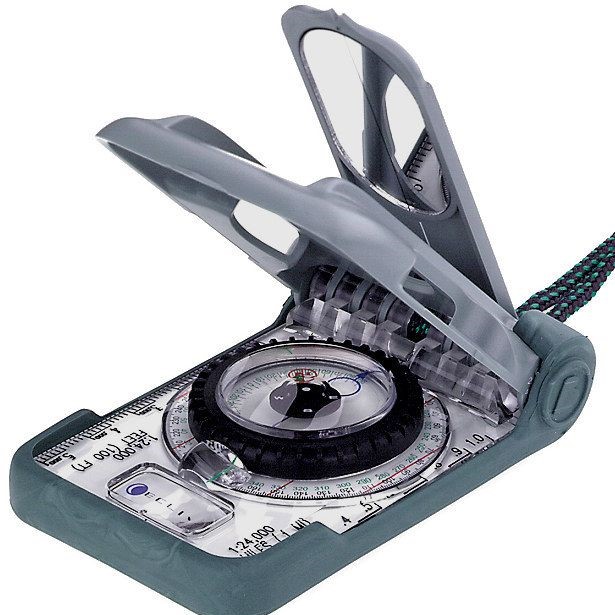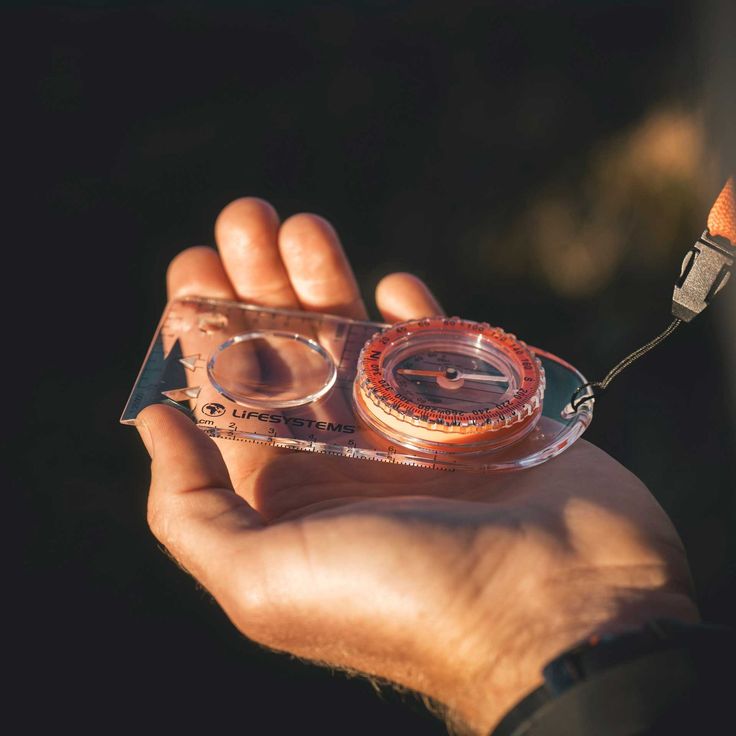Introduction to Magnetic Compasses
How do compasses work? Magnetic compasses are essential tools for navigation. They help determine direction by utilizing Earth’s magnetic field. Travelers, sailors, and hikers rely on them to find their way. This section explores the origins and importance of magnetic compasses.
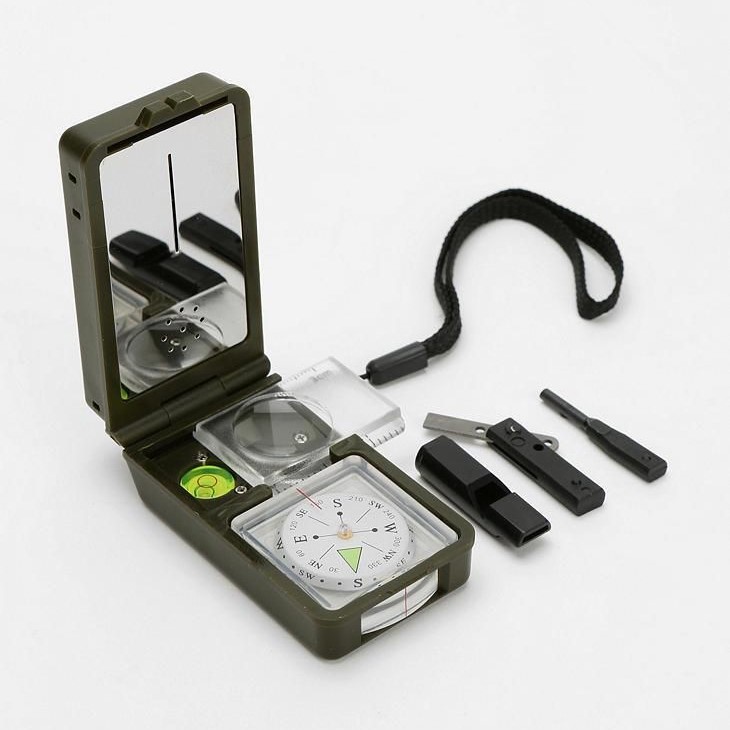
History and Evolution of Compasses
The use of compasses dates back over a thousand years. Ancient Chinese navigators invented the first compasses around 200 BCE. These early tools were made from naturally magnetized rocks called lodestones. By the 12th century, compasses spread to Europe, improving navigation on land and sea.
Over time, compasses evolved into more reliable devices. In the 13th century, sailors used floating compasses on water. By the 16th century, engineers designed dry compasses with pivoted needles. Liquid-filled compasses emerged in the 20th century, reducing needle fluctuations. Advanced digital compasses now utilize sensors and software for precise readings.
Compasses are crucial for safe and accurate navigation. They provide direction in areas without landmarks or clear paths. Mariners rely on compasses to chart courses across vast oceans. Hikers use them to navigate dense forests or remote trails.
Compasses also guide pilots during flights and help researchers in remote expeditions. For centuries, they have been invaluable in exploration, survival, and travel. Even with GPS systems, compasses remain vital for backup and reliability.
The Science Behind Magnetic Compasses
Magnetic compasses work by aligning with Earth’s magnetic field. Understanding the science behind their operation is essential for appreciating their functionality.
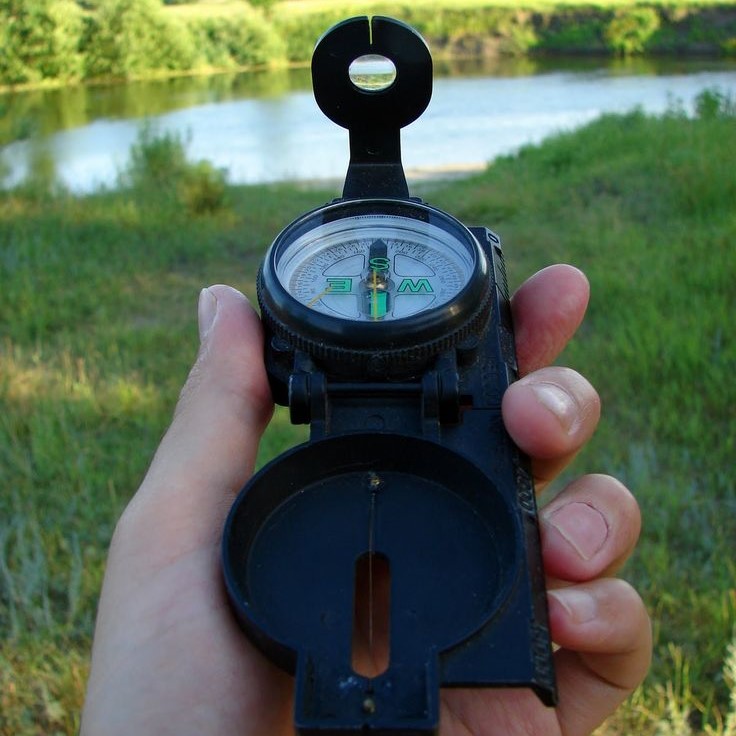
Earth’s Magnetic Field and Its Role
Earth acts like a giant magnet with a magnetic field surrounding it. This field is created by the movement of molten iron in Earth’s core. It has two poles: the magnetic north and magnetic south.
The magnetic field guides compass needles, pointing them toward the magnetic north. This makes compasses reliable tools for navigation worldwide. Earth’s magnetic field helps compasses function, even in remote locations without landmarks.
How Magnetic Fields Interact with Compass Needles
Compass needles are small magnets. They align with Earth’s magnetic field lines. When held flat, the needle freely rotates until it points toward magnetic north. This interaction helps users determine direction.
If a compass is near strong magnetic objects, the needle can be influenced. Metals, electronics, or other magnetic sources can interfere with readings. To ensure accurate results, keep the compass away from magnetic disturbance.
Types of Magnetic Compasses
Magnetic compasses come in different types, designed to suit various navigation needs. Understanding these types helps in selecting the right compass for specific applications.
Traditional Magnetic Compass
Traditional magnetic compasses feature a magnetized needle that rotates to align with Earth’s magnetic field. The needle sits on a pivot point and is protected by a casing. These compasses often include a printed dial with directional markings, like north, south, east, and west.
Traditional compasses are reliable for basic navigation. They do not require batteries or advanced technology, making them ideal for outdoor use. They are suitable for hikers, campers, and sailors who need simple and durable tools.
Liquid-Filled Compasses
Liquid-filled compasses improve upon traditional designs by using liquid to stabilize the needle. The liquid reduces needle movement, allowing for faster and more precise readings. This design is particularly helpful in shaky conditions, such as on a moving boat or unstable terrain.
These compasses also work in colder or warmer climates because the liquid prevents the needle from sticking. Liquid-filled compasses are commonly used in professional navigation, outdoor sports, and research expeditions where accurate readings are essential.
Digital Compasses and Technological Advancements
Digital compasses represent the latest development in navigation technology. They use sensors, software, and electronic components to read magnetic fields. Many digital compasses are built into devices like smartphones, GPS units, and watches.
These compasses provide additional features like altitude, coordinates, and maps, making them versatile tools. They rely on power sources like batteries or solar energy, which might limit their use in remote areas if not properly maintained.
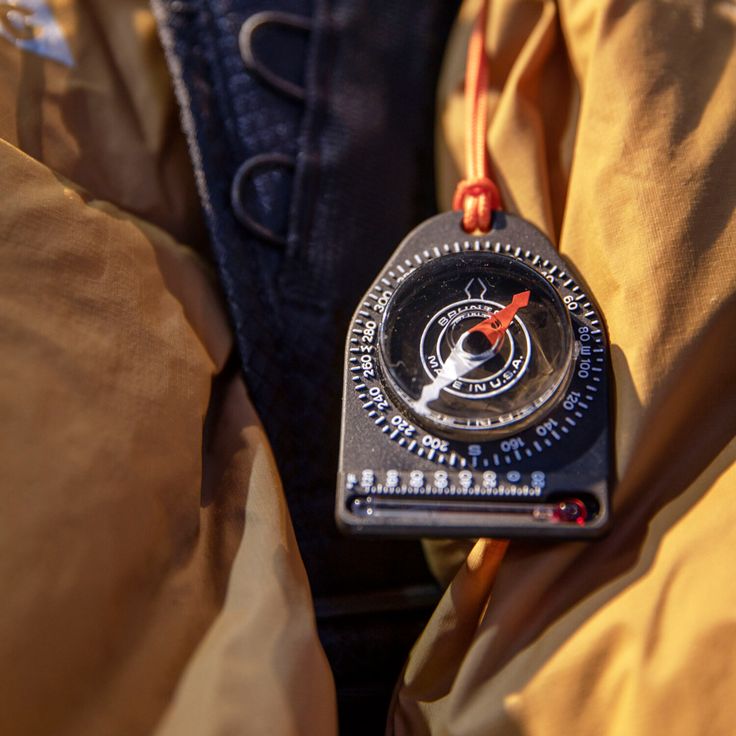
Digital compasses are ideal for modern explorers, pilots, and researchers who require multifunctional devices for navigation. However, they generally act as complements to traditional compasses rather than complete replacements.
How to Use a Magnetic Compass
Learning how to use a magnetic compass is essential for navigation. It ensures accurate direction and avoids getting lost. Below are the steps and techniques to follow.
Basic Usage and Orientation Techniques
- Hold the Compass Properly: Hold the compass flat in your palm at chest height. Keep it level, so the needle moves freely.
- Align with a Map: Place the compass on your map. Align the edge of the compass baseplate with your desired route or direction.
- Rotate the Bezel: Turn the compass bezel until the orienting arrow aligns with the map’s north. This helps find a bearing.
- Take a Bearing: Stand facing your target direction. Rotate your body until the magnetic needle aligns with the orienting arrow on the compass.
- Follow the Direction: Walk while keeping the magnetic needle aligned with the orienting arrow. Regularly check the compass to stay on course.
Mastering these steps can make navigating with a compass more effective and reliable.
Common Mistakes to Avoid
- Ignoring Magnetic Declination: Magnetic north and true north are not the same. Adjust for declination for accuracy.
- Holding the Compass Unevenly: An uneven compass can cause the needle to stick. Always keep it level.
- Using Near Magnetic Objects: Avoid using your compass near electronics or metals. These can distort readings.
- Misreading the Needle Direction: Ensure you follow the correct end of the needle, which points north.
- Not Rechecking Bearings: Bearings can shift as you walk. Frequently verify your direction.
By avoiding these mistakes, you can navigate safely and effectively with a magnetic compass. Practice regularly to build confidence in its use.
Maintaining and Calibrating a Compass
Proper maintenance and calibration are crucial for the accuracy of a magnetic compass. Regular care and calibration ensure that the compass functions reliably in all navigation scenarios.
Tips for Proper Care
- Store Your Compass Safely: Keep your compass in a protective case when not in use. Avoid placing it near magnetic objects or electronic devices, which can affect its magnetism.
- Clean Regularly: Wipe the compass gently with a soft, dry cloth to remove dirt or debris. Do not use harsh chemicals that may damage its casing or internal parts.
- Avoid Extreme Temperatures: Store the compass in a stable environment, away from excessive heat or cold. Extreme temperatures can cause the liquid in liquid-filled compasses to expand or contract, compromising their accuracy.
- Check for Dents or Cracks: Examine the housing for physical damage or leaks, especially for liquid-filled compasses. Repairs might be necessary if you find leaks or severe wear.
- Avoid Dropping the Compass: Always handle your compass with care to prevent misalignment or damage to the needle.
By following these steps, you can prolong the lifespan of your compass and maintain its reliability.
Understanding Calibration Procedures
- Verify Compass Accuracy Regularly: Test the compass against a known reference point. Confirm that the needle points to magnetic north.
- Correct for Magnetic Declination: Magnetic north differs from true north. Use a map or app to find the local declination value. Adjust your readings accordingly for precise navigation.
- Calibrate Digital Compasses Properly: Follow the manufacturer’s instructions. Usually, this involves rotating the device in a specific pattern to recalibrate its sensors.
- Check for Magnetic Interference: Use the compass in a clear area, away from metals or magnetic sources. Interference can cause inaccurate readings.
- Retune Compass Periodically: Mechanical compasses can lose magnetism over time. Retuning by remagnetizing the needle may restore accuracy.
Regular calibration ensures that your compass provides accurate bearings, especially in critical navigation scenarios. With proper care and calibration, your compass will remain a dependable tool for outdoor adventures and exploration.
Applications of Magnetic Compasses
How do compasses work? Magnetic compasses serve various purposes across different domains. They are indispensable tools for navigation.
Magnetic compasses are critical for marine and aviation navigation. Mariners use them to chart precise courses across oceans. Without landmarks or visible guides at sea, compasses ensure accurate direction. Pilots also rely on compasses during flights, especially in low visibility conditions. They act as essential backups to advanced avionic systems. Compasses help maintain flight stability and ensure safe travel in remote or unfamiliar skies. Their simplicity and reliability make them indispensable for these industries.
Hiking and Outdoor Adventures
Hikers and outdoor enthusiasts depend on magnetic compasses in remote and natural environments. Dense forests, mountains, or unmarked trails often lack visible points of reference. Compasses help explorers stay on course and reach their destinations. They are lightweight and easy to use, making them ideal for outdoor gear. Combined with maps, they assist in plotting challenging routes. Survivalists also rely on compasses for ensuring safety and direction during adventures. In remote areas, where GPS devices may fail, compasses remain trustable navigation aids.
Military and Survival Uses
Magnetic compasses play key roles in military operations and survival scenarios. Soldiers use them for tactical navigation in terrains where electronic devices may fail. They ensure movement without detection, especially when stealth is required. Compasses also help locate objectives and evade obstacles in hostile environments. In survival situations, such as being stranded or exploring remote locations, compasses guide users to safety. Their durability under tough conditions makes them reliable for military and survival applications.
Overall, magnetic compasses prove versatile and reliable for diverse use cases. Despite advancing technologies, they remain invaluable in many critical scenarios.
Limitations of Magnetic Compasses
Magnetic compasses, while versatile, have limitations that users should be aware of. These limitations affect their accuracy and reliability in certain situations.
Effects of Magnetic Interference
- Presence of Nearby Metal Objects: Metal objects can disrupt the Earth’s magnetic field. This interference causes the compass needle to deviate.
- Electromagnetic Devices: Devices like phones, radios, or magnets can alter the needle’s alignment. Avoid using the compass near them.
- High Magnetic Environments: In areas with strong magnetic activity, readings become unreliable. This is common near industrial or geological sites.
- Magnetic Declination: Compass points to the magnetic north, not true north. Failure to adjust for declination causes navigation errors.
To reduce interference, use a compass in open areas and away from magnetic or electronic sources.
Situations Where Compasses Can Fail
Extreme Temperatures
- Impact of Temperature on Performance: Liquid-filled compasses, like any sensitive instrument, are vulnerable to extreme temperatures. Excessive heat or cold can significantly affect their accuracy and reliability.
- Liquid Expansion and Contraction: In very hot environments, the liquid inside the compass may expand, potentially spilling or changing its density. Conversely, in cold conditions, the liquid can contract, which may interfere with the needle’s movement and responsiveness.
- Accuracy Implications: These thermal changes can lead to inaccuracies in readings. It is crucial for users to be aware of the affect that temperature extremes can have on compass performance, especially when navigating in challenging environments.
Damage or Wear
- Common Forms of Damage: Compasses can sustain various types of damage, including dents, scratches, or leaks. Each of these issues can hinder the compass’s ability to function correctly.
- False Readings from Damage: A dented or scratched compass might misalign the needle, leading to erroneous readings. Additionally, if the liquid leaks, the internal mechanism may be compromised, resulting in unreliable direction information.
- Regular Maintenance: Performing regular checks for damage or wear is essential. Users should inspect their compasses routinely to ensure they are in good condition and can provide accurate readings.
Loss of Magnetism
- Understanding Magnetism: Over time, the magnetic needle of a compass can lose its magnetism. This loss can render the compass ineffective, causing it to provide incorrect directional information.
- Causes of Magnetism Loss: Improper storage is a significant factor that can contribute to a compass’s loss of magnetism. Exposure to strong electromagnetic fields, such as those found in electronic devices, can also disrupt the integrity of the compass needle.
- Preventive Measures: To mitigate this risk, users should store their compasses away from strong magnetic fields and ensure that they are not placed in environments that could cause them to lose their magnetism.
Terrain-Specific Challenges
- Polar Region Complications: Navigating in polar regions presents unique challenges for compass users. In these areas, compass readings may become erratic or unreliable due to the disruptive influence of the magnetic poles.
- Magnetic Pole Disruption: The proximity to the magnetic poles can lead to unpredictable shifts in compass alignment. This phenomenon creates significant challenges when attempting to navigate accurately.
- Adapting Navigation Techniques: Users in polar regions or similar challenging terrains may need to adapt their navigation techniques. They should consider additional methods of finding direction, such as using GPS or traditional maps, to supplement compass readings.
Human Error
- Potential for Misuse: Human error is a common factor that can lead to incorrect compass navigation. Misreading the compass or failing to account for magnetic declination can result in significant directional mistakes.
- Neglecting Calibration: Regular calibration is critical for ensuring compass accuracy. Users may forget to recalibrate their compasses after they have been dropped or exposed to conditions that could affect their readings.
- Importance of Regular Practice: To avoid direction errors, regular practice with a compass is essential. Familiarizing oneself with the proper techniques and conducting routine maintenance will enhance confidence and reliability in navigation.
While reliable, magnetic compasses are not foolproof. Knowing their limitations helps avoid critical navigation mistakes.
Conclusion: The Enduring Relevance of Compasses
In summary, understanding how do compasses work is key to effective navigation, whether for hiking, sailing, or exploring new territories. The interplay between the compass’s components and the Earth’s magnetic field allows users to find direction with confidence.
Despite advancements in technology, the core principles governing magnetic compasses remain unchanged, solidifying their importance and relevance. As we appreciate the history and mechanics of this remarkable tool, we also empower ourselves to navigate the world with greater ease and precision.
So next time you venture into the great outdoors or simply need to find your way, remember the humble compass—a time-tested guide helping adventurers everywhere find their bearings!
